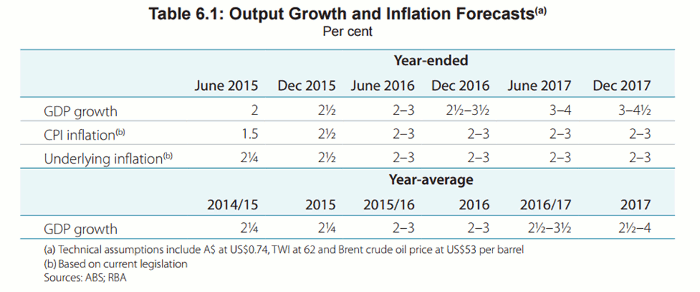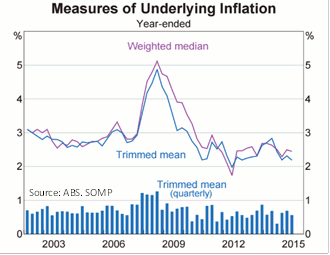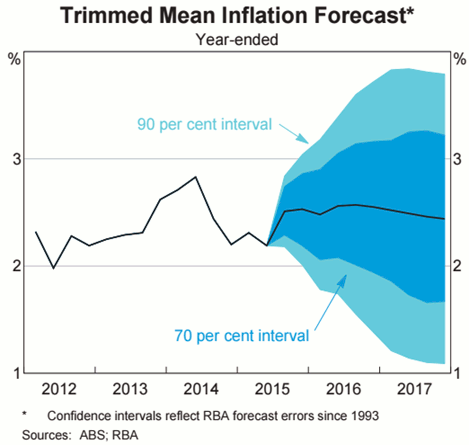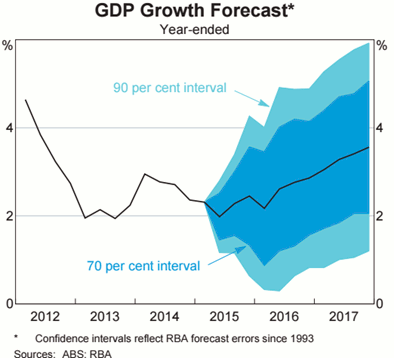RBA Statement on Monetary Policy August 2015
- GDP growth in 2016 now expected to average 2.5% (prev. 3.0%)
- Unemployment to remain at or near current levels for 18 months
- Inflation forecast to be slightly higher for 2016/2017 (2.5% at end of 2016 from 2.25%)
The RBA’s quarterly statement of monetary policy was released on 7 August and its mood was generally positive despite some downgrades to growth forecasts. The main points were:
- The Australian economy has “continued to grow at a moderate pace over the past year” despite structural change – largely the ending of the mining boom and the significant fall in commodity prices.
- Although June growth slowed from the March quarters, a number of indicators, such as labour force figure and non-mining business conditions, are more positive. Indeed, business conditions are “above average”.
- Growth amongst Australia’s trading partners is expected to be near the long-term average for the financial years 2015 and 2016. The figures have been revised down a little since the May SoMP and are the result of weaker numbers from East Asia – mainly China.
- Underlying inflation was around 0.5% in the June quarter and 2.25% over the year. Forecasts have been revised up a little because of the lower Australian dollar while domestic cost pressures are expected to remain “well contained”. Forecast underlying inflation is expected to be around 2.5%.
- Spare capacity remains but labour market conditions are better than expected some months ago. Lower population growth due to lower net immigration and low wages growth has helped stop unemployment rising further. Unemployment is forecast to stay around current levels for the next 18 months before declining in 2017. Previously the RBA had forecast unemployment to peak at 6.5% in late 2015/early 2016.
GDP growth is currently below average but is “expected to be between 2 and 3%” for 2016 and “over 3% for the year to June 2017.” The forecasts are based on current interest rates futures, the same exchange rates as now, oil prices remaining stable, lower population growth than in the past, a lower household savings ratio, weaker investment (both non-mining and mining) and stronger volume-driven exports and a lower level of imports.
Market reaction to the SoMP is that the RBA will not need to cut rates in the short term because they are still waiting on the effects of the rate cuts earlier this year to flow through. ANZ’s Warren Hogan said the RBA would not act in the short term as the AUD was weakening as hoped and would continue to do without lowering rates further. The RBA “are reasonably confident that the US Fed will raise rates in the next few months” which would tend to put downward pressure on the exchange rate. The expectation of a cash rate cut by the market moved swiftly from being priced as an 85% chance to a 55% chance.






